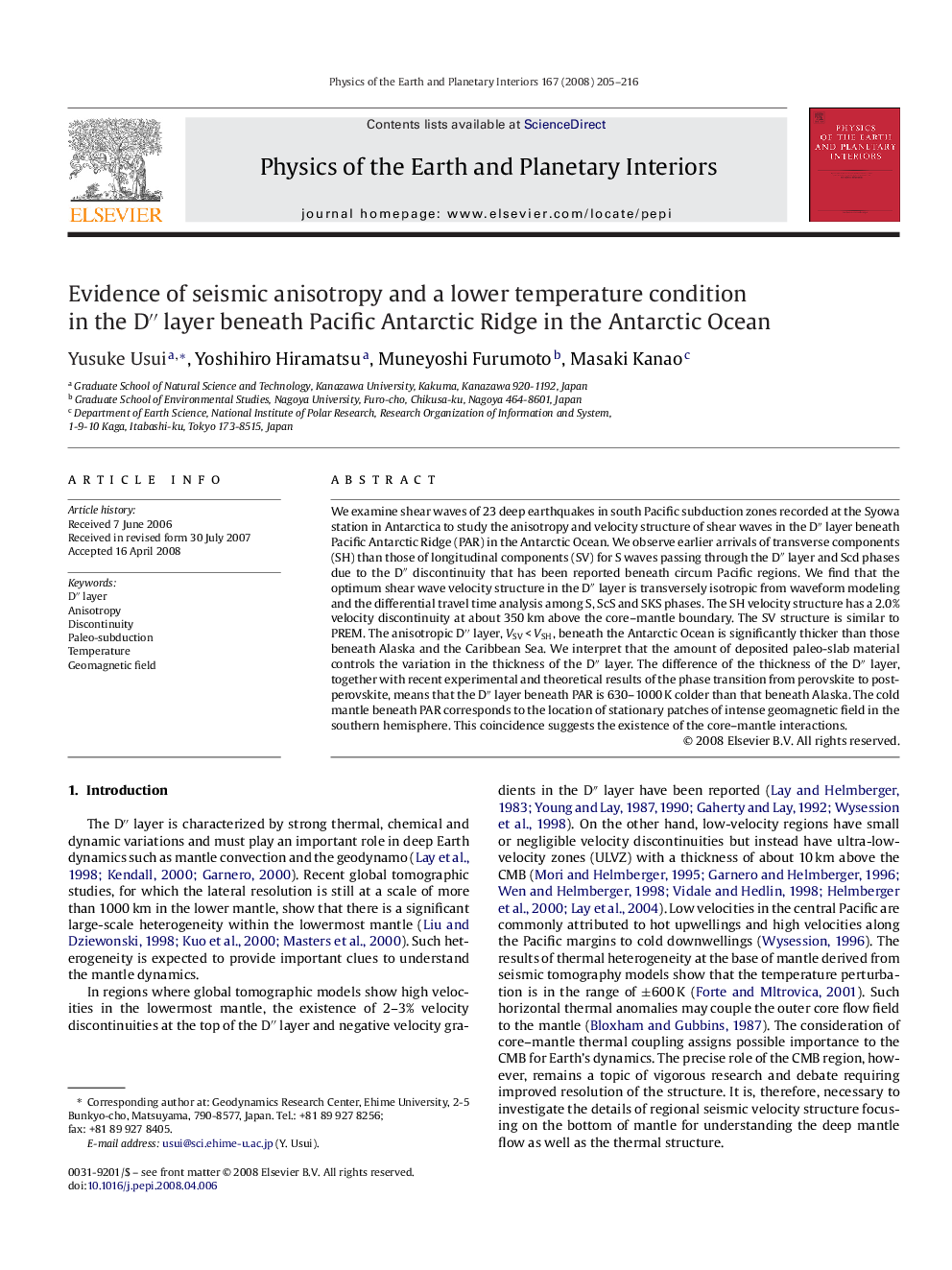| Article ID | Journal | Published Year | Pages | File Type |
|---|---|---|---|---|
| 4742444 | Physics of the Earth and Planetary Interiors | 2008 | 12 Pages |
We examine shear waves of 23 deep earthquakes in south Pacific subduction zones recorded at the Syowa station in Antarctica to study the anisotropy and velocity structure of shear waves in the D″ layer beneath Pacific Antarctic Ridge (PAR) in the Antarctic Ocean. We observe earlier arrivals of transverse components (SH) than those of longitudinal components (SV) for S waves passing through the D″ layer and Scd phases due to the D″ discontinuity that has been reported beneath circum Pacific regions. We find that the optimum shear wave velocity structure in the D″ layer is transversely isotropic from waveform modeling and the differential travel time analysis among S, ScS and SKS phases. The SH velocity structure has a 2.0% velocity discontinuity at about 350 km above the core–mantle boundary. The SV structure is similar to PREM. The anisotropic D″ layer, VSV < VSH, beneath the Antarctic Ocean is significantly thicker than those beneath Alaska and the Caribbean Sea. We interpret that the amount of deposited paleo-slab material controls the variation in the thickness of the D″ layer. The difference of the thickness of the D″ layer, together with recent experimental and theoretical results of the phase transition from perovskite to post-perovskite, means that the D″ layer beneath PAR is 630–1000 K colder than that beneath Alaska. The cold mantle beneath PAR corresponds to the location of stationary patches of intense geomagnetic field in the southern hemisphere. This coincidence suggests the existence of the core–mantle interactions.
